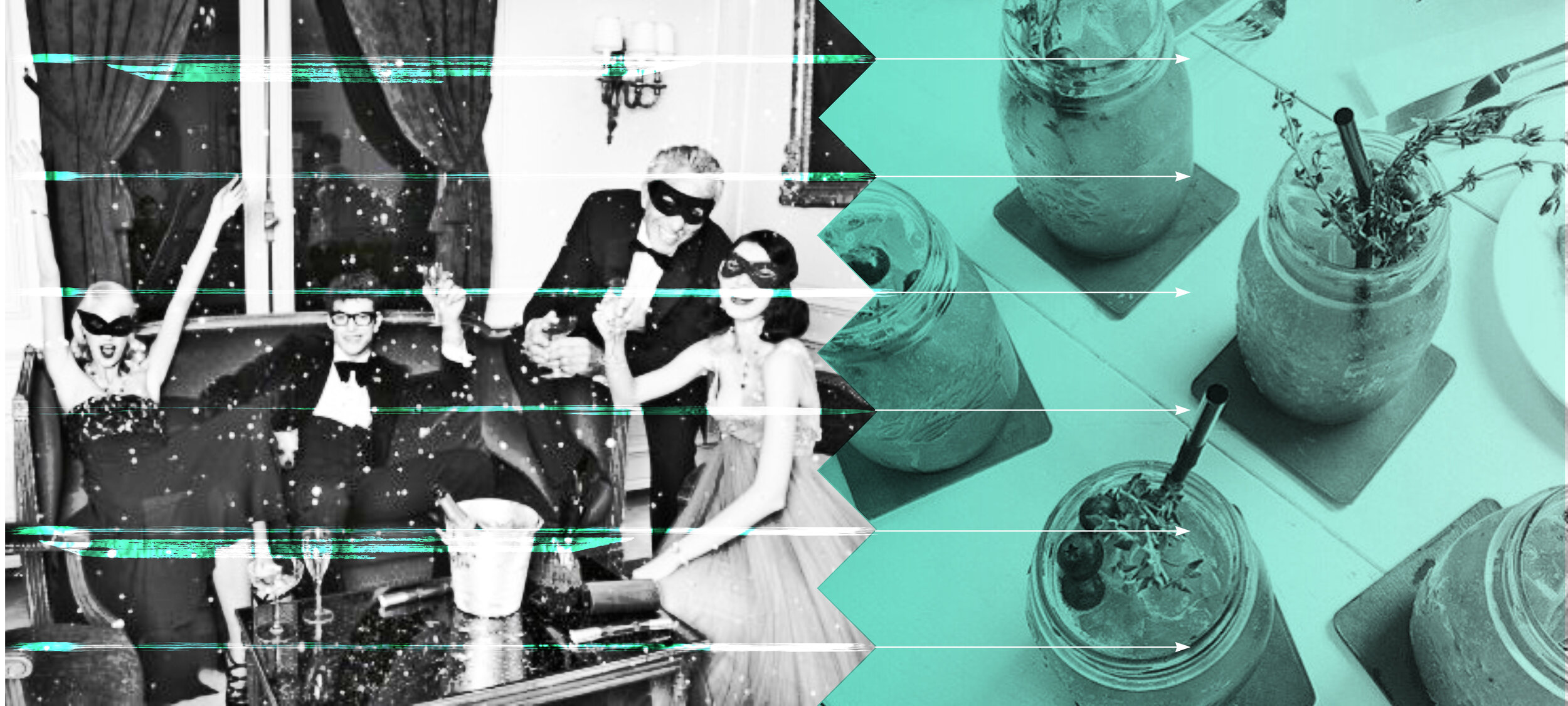Sobering Times Ahead
A Slow Decline
It may come as a surprise to learn that alcoholic beverage consumption dropped 1.8 percent in 2018. This downward trend is causing alcoholic beverage companies to rethink their business strategy and develop non-alcoholic beverages which mimic their alcoholic counterparts minus the alcohol. Let's take a look at the trend of alcohol consumption and how businesses must innovate in order to adapt to the growing trend of sobriety.
The Trend of Alcohol Consumption Across Generations
The rate of alcohol consumption has certainly changed over the past few generations. There is a marked difference in alcohol consumption among Generation X, Generation Y (Millennials), and Generation Z. Why is there a trend towards declining consumption?
Generation X
Those who belong to Generation X make up about 82 million of the U.S. population. They were born between 1965 and 1979 which makes them between 40 and 54 years of age at this time. In their hay day, Generation X enjoyed the consumption of alcohol and certainly did their part to keep alcoholic beverage companies in business.
It is important to realize that while many people from Generation X still enjoy alcoholic beverages, they often refrain from drinking in the quantities they once did. This generation is now made of older adults who may have families and possibly even grandchildren, potentially contributing to the decline in alcohol consumption. For others, the decline may be due to health issues which are not conducive to excessive alcohol consumption.
Generation X also values quality over quantity. This means they will be particular about only searching for the best and only buying if the price is right.
Millennials
Millennials were born between 1980 and 1994 and make-up about 73 million people in the United States. They are currently between 25 and 39 years of age. While most Millennials enjoyed copious amounts of alcohol consumption in their early 20's, more and more are choosing to sober up and significantly reduce the amount of alcohol they consume on a weekly basis. The reasons include
Millennials now have or are starting families of their own.
They tend to prioritize health-seeking behaviors and physical wellbeing.
For many, it is not financially feasible to spend large sums of money on alcoholic beverages.
Generation Z
Studies show that not only is Generation Z consuming less alcohol than those in Generation X, but there is even a decline compared to Millennials of the same age.
There is no doubt that there is a decrease in consumption across the board for Millennials. However, Generation Z is proving to change the game when it comes to the consumption of alcohol. Those belonging to Generation Z were born between 1995 and 2015. This makes them anywhere from 4 years old to 24 years old. They make up about 74 million in the United States.
Studies show that not only is Generation Z consuming less alcohol than those in Generation X, but there is even a decline compared to Millennials of the same age. Reasons for the decline in consumption include:
They maintain a focus on health and wellbeing.
Hangovers are viewed as unappealing.
There are concerns of being judged by family, friends, and coworkers.
Drinking is not seen as an attractive or cool activity.
Why This is Troublesome for Alcoholic Beverage Companies
Alcoholic beverage companies are well aware that each generation has a peak "drinking age." However, there is always a new generation coming of age to take their place. Not to mention the fact that older generations are still consuming alcohol, just not as much as they once were.
With a severe decline among Millennials and the newest generation seeming to lack an interest from the start, there isn't anyone to fill the void. This leaves companies with no choice but to change their business strategy to adapt to this new "non-alcoholic" beverage trend.
How are Alcoholic Beverage Companies Adapting to This Sobering Trend?
Until recently non-alcoholic beverage choices were limited to milk, juices, tea, soda, and water. A growing trend towards sobriety is forcing companies to introduce low alcohol or non-alcoholic beverages. Mocktails and non-alcoholic beers have been around for decades but are just beginning to pick up steam as a popular alternative.
Companies are also introducing cannabis-infused non-alcoholic beverages because of their appealing health benefits. Individuals still have a desire to enjoy a night out and drink beverages, just without the inebriation and hangover that follows.
Another drink rising in popularity is kombucha. This fermented tea has a low alcohol content and is touted for its probiotic properties that are beneficial to the digestive system. This is especially appealing to Millennials and Generation Z because as a whole, these two generations are very much health-oriented. If desired, kombucha can be mixed with cocktails of your choice as well as beers. However, it doesn't have to be mixed with anything and can be consumed as is.
For instance, Coca-Cola has launched a line of bottled, non-alcoholic beverages called Bar None. The line includes flavors such as Ginger Mule and Bellini Spritz just to name a few. Heineken has released its 0.0 beer, which is alcohol-free and perfect for those who enjoy the taste of beer but aren't interested in consuming alcohol or aren't able too. Many more are following suit in order to meet the growing demand for non-alcoholic beverages that have the look and taste of alcoholic drinks.
Finding the Balance
The key is for companies is to listen to consumers. While some still prefer alcoholic beverages to non-alcoholic beverages for special occasions, a rising number of people either prefer to switch back and forth depending on the situation or to stick with non-alcoholic beverages. Beverage companies are striving to maintain their quality alcoholic lines while introducing innovative and fun non-alcoholic beverages that give consumers an appealing alternative.

